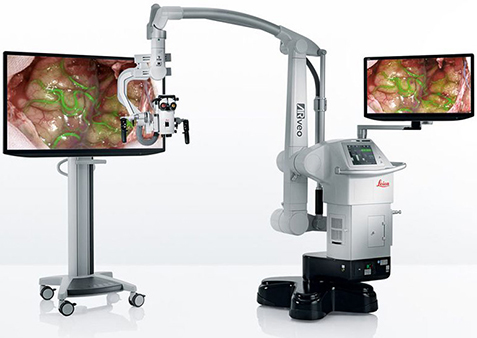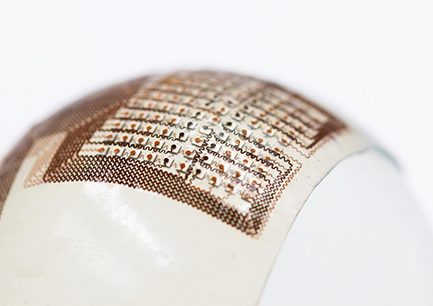The year 2018 is nearly over, and it is time for us to reveal what we believe were the most notable developments in medical technology. We considered a technology’s clinical importance, the greatness of the leap that it’s making over existing solutions, as well as how we expect it to be adopted by doctors and nurses. Additionally, we place great value on the novelty, the engineering brilliance embedded within, and how a new technology makes possible what recently seemed nearly inconceivable. As such, a technology that may not be the most useful, but if it strikes our imagination and opens up new possibilities in the future, we are glad to include it in our winner’s list.
VR and AR

Virtual reality and augmented reality technologies are making it possible to study and interact with the human body in unexpected ways. This year, the Microsoft HoloLens augmented reality headset has been used by surgeons at Imperial College London to help reconnect severed blood vessels. At Alder Hey, an important children’s hospital in England, the HoloLens is also being introduced to give surgeons the ability to review imaging and other patient data during surgery and without having to look away from the surgical field.
Remote controlled drones coupled with augmented reality technology can let professionals assist first responders with handling injured patients.
The newly released Leica GLOW800 augmented reality surgical microscope combines fluoroscopy and natural color vision, making it much easier to remove tumors tagged with fluorescent markers than having to use two different imaging systems.
Drug Delivery
Until a few years ago, “drug delivery” simply meant swallowing a pill. Today, this is a huge field of research that will allow clinicians to bypass the body’s defenses to treat previously untreatable conditions and to even automate treatments by medicating patients whenever certain measured parameters are met.
A smart Bluetooth-powered electronic pill developed at MIT can reside in the stomach for over a month while releasing drugs whenever needed. It eventually breaks up into pieces and exits the body without leaving anything behind.
A heart that survives a cardiac infarct can benefit from a number of medical compounds, but those are normally delivered by injection and therefore influence the entire body. A team of researchers from the U.S. and Ireland have developed a device that can be used to deliver drugs directly to a damaged region of a heart. One end of the device is stuck to the heart, while the other end is an injection port that protrudes through the skin. A syringe can be used to push drugs through the port and into the damaged area of the heart.
Like the heart, the eyes are also difficult in terms of drug delivery. The eyes wash away anything that lands on them and have a number of defenses to prevent things from penetrating into the interior of the eye. EyeGate II iontophoresis drug delivery system uses electric current to gently push ionized drug molecules through the eye. An electrode is placed on the patient’s forehead, while the opposite electrode is within a special applicator. The applicator ionizes the drug, while an electric current running between the electrode pulls the ionized particles along with it.
AI and Automatic Diagnosis

Artificial Intelligence and related technologies are beginning to make a real impact in medicine. It is hoped that AI will help to ameliorate the shortage of doctors that’s expect to grow over the coming decades, and in radiology, pathology, ophthalmology, and other areas of medicine this will certainly be the case.
The FDA this year issued the first clearance for a system that can autonomously diagnose a medical condition. The IDx-DR from IDx, a company out of Coralville, Iowa, can detect diabetic retinopathy in patient eyes all on its own, and without having to be reviewed every time by a trained physician. The system is designed for general practitioners and other physicians that regularly deal with diabetic patients, and is not intended to replace ophthalmologists in any sense. It does make screening easy, and will hopefully help get more people to receive treatment earlier in the disease progression.
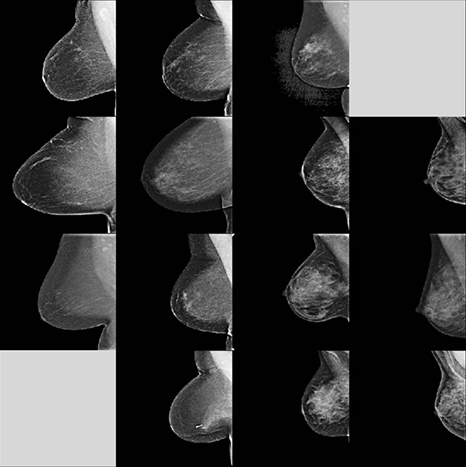
Dense breasts have been recognized as resulting in more cases of breast cancer, and there are technologies available to help detect lesions in dense breasts.
To make sure that women are placed a proper diagnostic course, researchers at MIT and Massachusetts General Hospital have developed an an automated system that rates breast density on mammograms. All it takes is raw tomography data from a mammogram machine, and it simply rates how dense the breast is on each scan.
The system was trained, using nearly 60,000 mammography images, to learn what dense breasts look like, thanks to each of the thousands of images having been already used in a real case and tagged with a radiologist’s diagnosis.
Eyes and Contact Lenses

Interesting developments are happening in the field of ophthalmology and eye care. Johnson & Johnson received clearance for the world’s first transition contacts. Transition glasses have been around for decades, but the Acuvue Oasys Contact Lenses with Transitions Light Intelligent Technology are the first contacts that automatically darken when in very bright environments.

Researchers in South Korea developed a contact lens that can measure glucose and intraocular pressure. The lens is soft and comfortable, and is transparent thanks to the novel use of graphene and metal nanowires that are embedded within that serve as sensors. The technology still requires perfecting, and glucose levels in tears are not directly correlated to blood glucose. The possibility to monitor numerous health conditions using contact lenses is, nevertheless, nearly here.
A similar development was announced by a Purdue University team that created a contact lens that can measure glucose, pH, and lactate in the eye. The researchers were able to integrate thin film sensors within a commercially available soft contact lens, resulting in a nearly ready to go device.

The FDA approved a the CustomFlex Artificial Iris developed by HumanOptics, a company based in Germany. The device is a flexible silicone membrane that is folded and inserted through a small incision in the eye, then unfolded in place. Clinical studies have shown the device to be very effective for helping people with a variety of iris defects.
3D printed artificial corneas that were seeded with stem cells, developed by scientists at Newcastle University in the UK, may help to address the chronic shortage of donor corneas. The artificial corneas are made from a combination of alginate, collagen, and human stem cells that are made to differentiate into corneal stromal cells.
Imaging and Microscopy
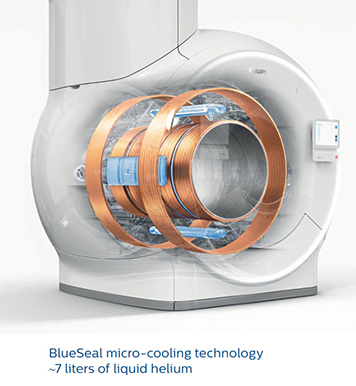
Our ability to view the human body in ever greater detail gives us the ability to address diseases sooner, to diagnose easily what was previously difficult, and to understand the many processes that govern our physical lives. This year we saw new and impressive achievements in this wide-ranging field.
Philips, to the surprise of many, released an MRI scanner that uses almost no helium to keep its magnets cool. Helium, though not exactly rare, is often in short supply. MRI machines are some of the largest consumers of helium, so the less the machines use, the better. Moreover, having all that helium inside the machine creates a potential safety hazard and a potential for a quench. Since this is impossible in the new Ingenia Ambition X 1.5T MR, due to the lack of helium, the system doesn’t even have a traditional exhaust vent.
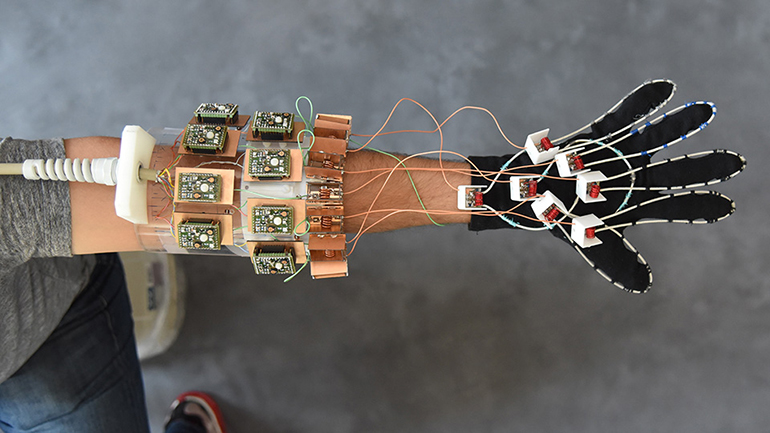
MRI machines are usually thought of large stationary devices with a bore hole in the middle. As such, they’re not very good at assessing the movement of joints since one can’t walk, jump, or otherwise move much inside a conventional MRI machine. Engineers at NYU Langone Health have created a wearable MRI detector that can image moving joints as they’re being used, providing a new and highly useful window into our muscles and bones.
Ultrasound has also now been optimized to look at small joints in our bodies thanks to an ultrasound patch developed at University of California San Diego. The device is highly flexible and conforms to the curves of a finger or toe, for example. It features 100 piezoelectric transducers that work in unison to create a 3D picture of the structures below the surface. The researchers envision the device being used to diagnose a variety of conditions, such as cardiac arrhythmias with intermittent symptoms, embolisms, and fetal heart rates and movements.
A related device, also from UC San Diego can be used to measure the central blood pressure.
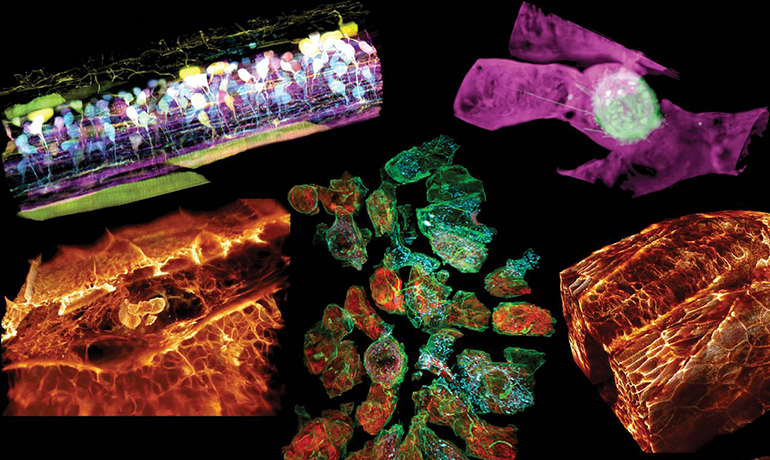
A collaboration of researchers at Howard Hughes Medical Institute, Harvard, Stony Brook, Caltech, and UC Berkeley led to the development of an amazing new microscope that can look deep through cells within living tissues. The device relies on a technique called lattice light-sheet microscopy, which involves passing a plane of light through tissue over and over. The beam of light is powerful enough to image the insides of individual cells, but because it’s focused into a very narrow sheet it doesn’t seem to disturb the processes taking place inside the cells.
Magnetoencephalography (MEG) allows us to see the electrical activity within the brain, but the devices that can do this, called SQUIDs (superconducting quantum interference devices), are huge and heavy. This makes it impossible to use MEG to study people that are moving about. Collaborators from University of Nottingham and University College London managed to create a head-worn magnetometer that is light, comfortable, and that will open up MEG to whole new range of clinical studies of how the brain works.
Blood Pressure
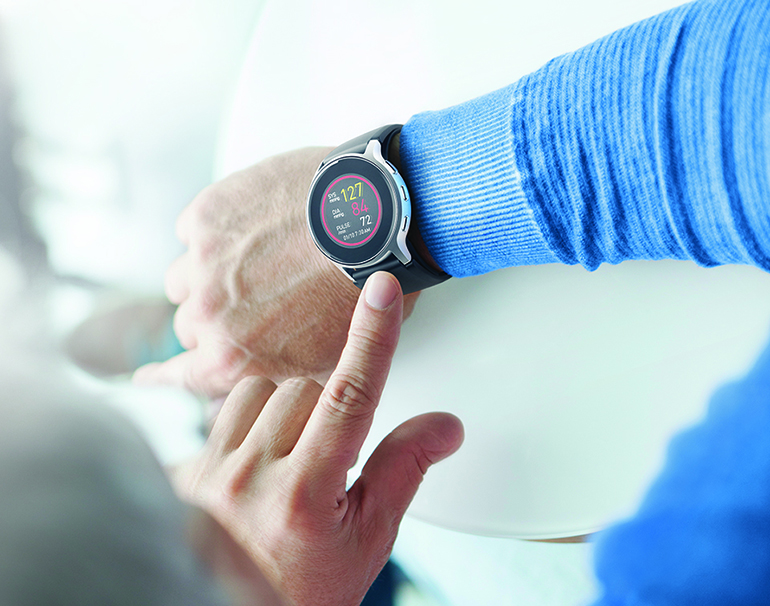
Omron unveiled the world’s first smartwatch capable of measuring blood pressure directly from the wrist. The HeartGuide watch will allow just about anyone to keep regular track of blood pressure without having to bring along a bulky device. We first got a chance to glimpse at the HeartGuide at last year’s CES. Stay tuned for our coverage of medical technologies being unveiled at the upcoming CES 2019 in January.
Diabetes
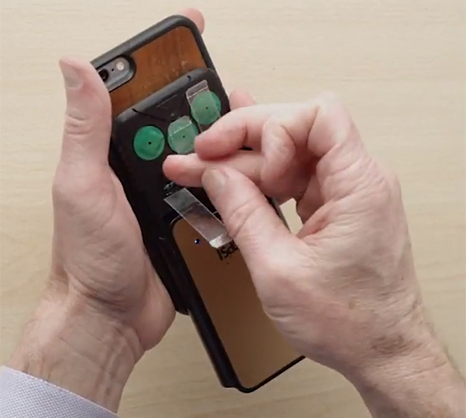
Diabetes continues to afflict millions of people, but a lot of new technologies are coming out that improve how it is managed. More hopefully, there are signs that we’ll be able to permanently treat the many varieties of diabetes by producing an artificial pancreas that can automatically regulate blood glucose levels
The FDA has cleared the POPS! one System for glucose testing on the go. The device is stuck to the back of a smartphone and includes lancet, a sensor port that measures the blood glucose, and everything else you need to get results within about 30 seconds. Once testing is complete, the numbers are available for review on the accompanying smartphone app.
If finger pricks are your main concern, the Dexcom G6 continuous glucometer doesn’t require them at all anymore. It automatically calibrates on its own and doesn’t require as much management as previous continuous glucometers that had to be re-calibrated daily.
Researchers at MIT have been working on a non-invasive glucometer, and they’re already showing pretty good results in early testing. While we regularly hear of non-invasive glucometers that are about to come out, MIT’s technology is actually showing impressive promise.
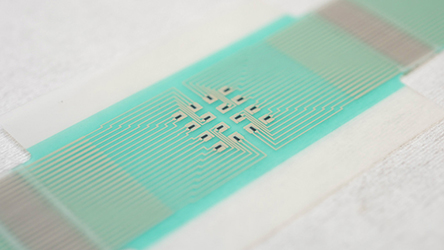
A skin patch developed at the University of Bath in England is able to suck glucose from the interstitial fluid in the skin and measure it without having to actually measuring blood itself. There’s still work to be done to correlate blood glucose with the measurements made within the skin.
Researchers at MIT developed a device that can keep pancreatic islets alive after being implanted into the body. Collaborators from Cornell University, Novo Nordisk, and University of Michigan Medical School developed their own implant that contains living pancreatic cells. Both of the devices seem very exciting and may soon lead to the introduction of an artificial pancreas into clinical practice.
Surgery, Implants, Vascular Therapies

CMR Surgical, a UK firm, unveiled its Versius Robotic Surgical System, one of the few competitors to the da Vinci from Intuitive Surgical. The Versius is modular, can be wheeled between different operating theaters, and most importantly it is relatively cheap.
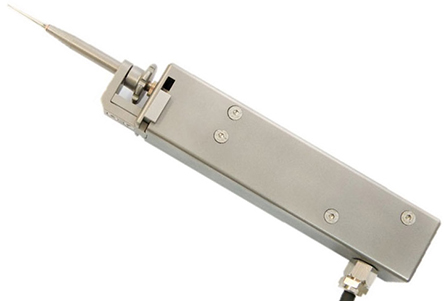
An incredibly sensitive drill, made to access the middle ear and which relies on artificial intelligence to guarantee it drills only what’s intended, has been developed at Brunel University London in the UK. It is so gentle that it can be used to drill through an eggshell without damaging the membrane below, as the video at the link demonstrates.
Stents and flow diverters have done wonders in the field of minimally invasive vascular surgery, but they sometimes lead to complications that are difficult to spot soon after implantation. Engineers at the University of British Columbia in Canada have developed a stent that is able to monitor the blood flow passing through it and detect restenosis early in its progression. A team of researchers from a number of institutions built a flow diverter that has a hemodynamic sensor designed to help assess the effectiveness of aneurysm treatment.

At University of Wisconsin-Madison, scientists have created and tested an electronic implant that stimulates the stomach to create a feeling of satiety. As food enters the stomach, the implant sends electric current through the vagus nerve and continues doing so long after there is no more food coming in. This gives the brain the impression that a lot more food entered the stomach than really did, and in a study on lab rats, the device led to a 40% weight reduction compared to controls.
Disability and Paralysis
While in past years we’ve seen people with severe spinal cord injuries move their legs on their own, this year some paralyzed folks were able to actually walk. Highly targeted and well tuned spinal cord stimulation has been key, but it turns out that such therapy can be made to work long after a stimulator has been turned off.
Researchers at University of Louisville in Kentucky combined spinal cord epidural stimulation with simultaneous treadmill training to allow four previously paralyzed people to stand independently, two of which are now able to walk using a standard walker. A similar development was achieved by clinical researchers at Mayo Clinic and UCLA.
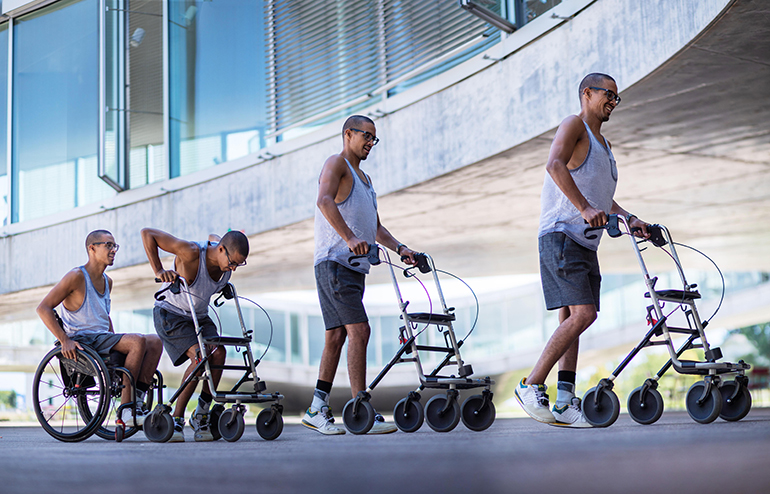
At the École polytechnique fédérale de Lausanne (EPFL) in Switzerland three people with serious spinal cord injuries are able to walk and to even move their legs without any electrical stimulation at all. Though crutches or walkers were used in the study, at least one of the participants has been able to take multiple steps without holding onto anything at all. It’s not fully clear how this works, but it seems like the nerves can be motivated to regrow in response to very well tuned electrical stimulation.

Prostheses, E-Skin, and Flexible Electronics
People with missing or poorly functioning limbs will soon be using light, powerful, and intuitively responsive prostheses and other assistive devices. We may soon even see commercial prosthetic arms that give users a sense of touch, but there are also other, often unexpected, technologies that are being developed to help people with all sorts of conditions.
Alzheimer’s and other diseases of the brain can have profound effects on the memory system. Researchers at Wake Forest Baptist Medical Center and University of Southern California created a brain prosthesis that can precisely excite groups of neurons in the hippocampus, where our memories are created. The device was successfully tested on volunteer epilepsy patients going in for brain surgery, as they were already going to have their skulls opened. The volunteers demonstrated a remarkable 35% increase in memory retention following use of the implant.

Stanford University researchers have created a stretchable electronic skin that can give prosthetic devices a sense of touch. The e-skin can be wrapped tightly around a prosthetic arm, for example, and it is so sensitive that it can detect the individual steps of a lady bug as she crawls along its surface.
Johns Hopkins researchers developed an electronic skin, which they call “e-dermis,” that has tiny tactile sensors connected, via a computer, to existing peripheral nerves of the patient. The technology was already tried with a patient using the bebionic arm from RSLSteeper, a UK firm. He was able to feel the shape of different objects and even felt pain, that made him recoil, when touching sharp things.
Having reviewed the best of the medical technology advancements of the past year, we’re very excited that our field is rich with innovation, hope, and real results that are making millions of lives better every day. We ask you to join us in the coming year as we report on new technologies that will shape our lives. We wish you a happy and healthy new year!

Flashback: Medgadget’s Best Medical Technologies of 2017…

